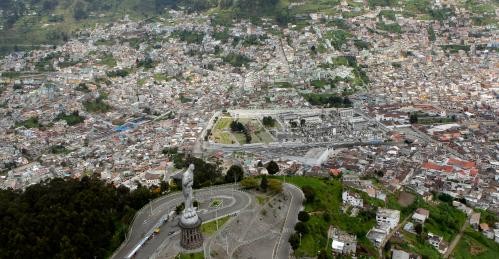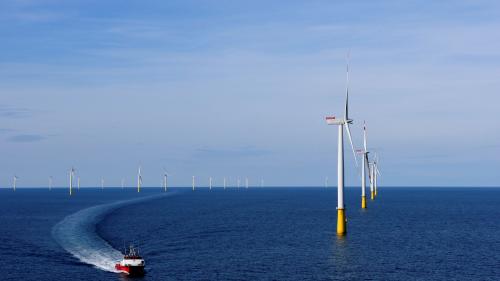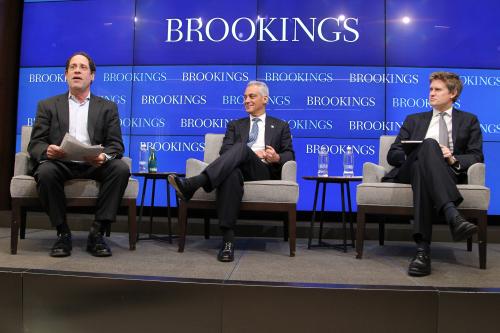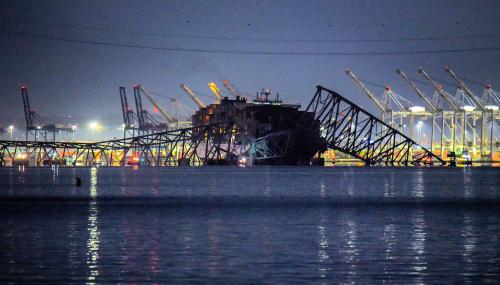A riverine renaissance is under way in urban areas around the world, as cities recognize the potential of waterways to create new transit options, revitalize underused land, protect against the impacts of climate change, and provide recreation, entertainment, and quality of life benefits. When mayors and their representatives from 17 cities gathered in Chicago March 12-13 to discuss strategies for waterfront revitalization, the conversation quickly turned to the governance of urban waterways and the ways to finance development.
Waterfront revitalization is a study in complexity. Ownership and use rights may not be transparent or easy to identify, and execution can rely on an array of partners, leaders, and financing sources. Yet the Urban Waterways Forum revealed that mayors have clear and specific roles to accelerate progress:
- Set the vision. Mayors can make the case for focusing on underutilized waterways and frame the value of investment to highlight the benefits of wellness, sustainability, economic development, and inclusion. Framing the issue for his city, Dallas Mayor Mike Rawlings said “everyone thinks oil is the lifeblood of Texas. But in reality water is.” Like many mayors, Rawlings spoke of the potential of revitalized rivers to not only provide access to water but to connect once-segregated parts of the city. In Buenos Aires, Mayor Horacio Larreta has made inclusive development a goal, recently announcing an ambitious plan to improve living conditions for more than 45,000 residents of Villa 31, a large slum adjacent to the Río de la Plata just north of the revitalized Puerto Madero district.
- Leverage partners and networks. Mayors can define the terms of engagement on waterfront projects to ensure broad public benefit. They can identify ways to work with external partners to develop plans and engage public, private, and civic partners on implementation. Cape Town, South Africa Mayor Patricia DeLille stressed two conditions her city sets for all potential partners in a waterfront revitalization project: plans must include affordable housing, and they must mitigate congestion. In Chicago, the mayor’s office partnered with civic organizations, including Friends of the Chicago River, the Metropolitan Planning Council, and World Business Chicago, to design a long-range plan for river revitalization.
- Secure funding. Mayors can lead on identifying, securing, and assembling financing. In most cities, the public sector can’t finance major developments alone, and private investors want long-term incentives. Buffalo, N.Y. Mayor Byron Brown has worked to secure financing for Canalside, the juncture between the Erie Canal and the Great Lakes, from state and private sources through the Erie Canal Harbor Development Corporation. Chicago’s Riverwalk project relied on a nearly $100 million federal loan from the Transportation Department under TIFIA (the Transportation Infrastructure Finance and Innovation Act), which provides a combination of direct loans, loan guarantees, and lines of credit for major infrastructure projects.
For mayors around the world, the ability of state and national budgets to support the rehabilitation of urban waterways is a major concern. U.S. and Canadian mayors of cities around the Great Lakes joined to protest an anticipated slash in Environmental Protection Agency funding from $300 million to $10 million. Such cuts would undermine the local investments that cities make in the health of their water sources. Tenuous federal and state funding points to the need for a multipronged investment approach that finds sources locally, as legacy owners sell land near waterways or otherwise engage in projects, and attracts global capital.
- Build movements, mechanisms, and markets. The drive by mayors to protect and leverage their water assets makes them natural allies and partners with each other. Competitive partners, to be sure, but the collective leadership of just these 17 cities could be transformative if turned toward deep and sustained efforts to advocate, leverage market power, and share lessons and practices. Going forward, cities and mayors could, as Brookings’s Bruce Katz said, “build a field around the public wealth of water.” Deep study of the details of institutional and organizational design would help mayors appreciate the kinds of intermediaries that can help cities overcome the coordination and governance challenges specific to waterfront projects. Cities could structure and pilot a financial product, as Sweden’s Kommunivest has done for green bonds, which would allow long-term institutional investors to get off the sidelines and onto the waterfront.
The health of waterways is a defining issue for cities and the world. The United Nations has announced a “Decade for Water” beginning in 2018, and Sustainable Development Goal 6 seeks to “ensure availability and sustainable management of water and sanitation for all.” These global ambitions do much to raise awareness and visibility, but they are often disconnected from local actors and decision makers and unable to address the multilevel governance structures and financing mechanisms necessary to implement solutions. Mayors are on the front lines of local problem solving and global diplomacy, and the Urban Waterways Forum was one example of the kind of competitive problem solving that can harness and direct the world’s waterways toward a sustainable urban future.









Commentary
Mayors can lead the way on waterfront revitalization
March 16, 2017